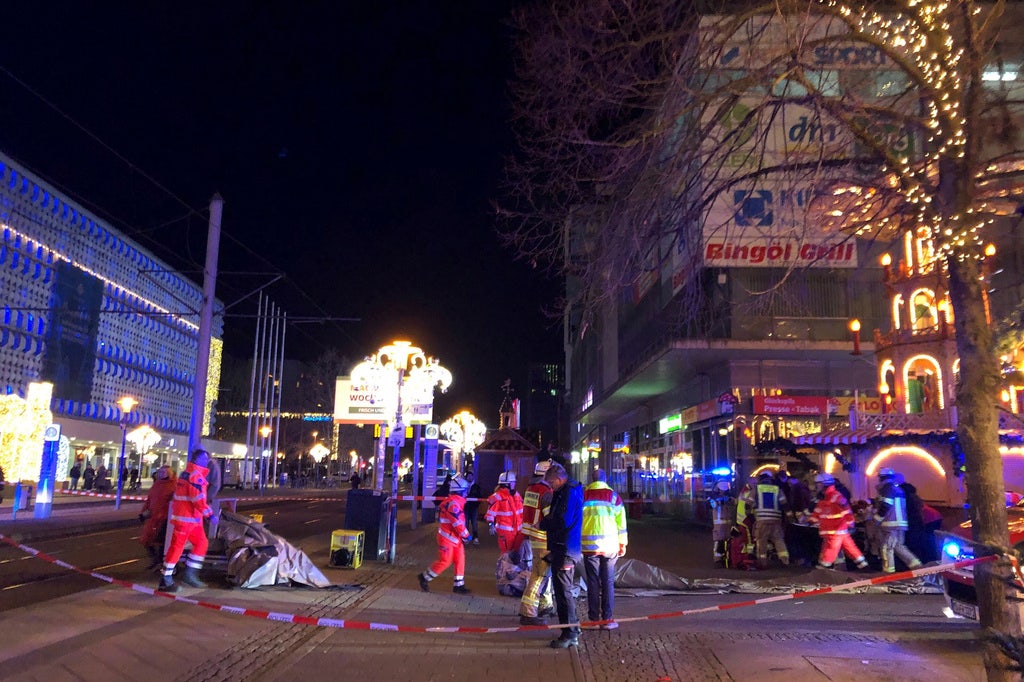The somber aftermath of the December 20 attack on a German Christmas market continues to unfold, with the death toll now reaching six. A 52-year-old woman succumbed to her injuries on Monday, adding another layer of grief to a tragedy that has already claimed the lives of five others. The attack, which occurred in the city of Magdeburg, saw a 50-year-old Saudi Arabian doctor plow a vehicle through the bustling holiday market, leaving a trail of devastation in its wake. Hundreds were injured in the incident, with some sustaining critical injuries and requiring extensive hospital care. The assailant was apprehended immediately following the attack, but the investigation into his motives and the full extent of the tragedy continues.
The deceased victims encompass a range of ages and backgrounds, underscoring the indiscriminate nature of the violence. Among them are a 9-year-old boy and four women aged 45, 52, 67, and 75. The loss of life has cast a pall over the festive season, transforming a symbol of joy and celebration into a scene of mourning and remembrance. Details surrounding the attack remain limited, with authorities cautiously piecing together the events leading up to the tragedy and the potential motivations of the perpetrator. The suspect, who has not been publicly identified, is a permanent resident of Germany, having arrived in the country in 2006.
Initial suspicions of terrorism have been tempered by emerging information about the suspect’s background and beliefs. While early reports suggested a potential link to extremist ideologies, further investigation revealed a more complex picture. The suspect reportedly identified as an ex-Muslim and expressed criticisms of Islam, while simultaneously displaying online support for far-right ideologies. This contradictory stance has complicated the investigation, challenging the conventional profiles often associated with perpetrators of extremist attacks. The apparent incongruity of his views has raised questions about the underlying motivations behind his actions and the extent to which ideology played a role.
The suspect’s history of threatening behavior and prior warnings received by authorities add another layer of complexity to the investigation. German Justice Minister Volker Wissing revealed that the perpetrator had previously attracted attention for making threats, but his seemingly confused political statements did not fit established patterns recognized by security agencies. This raises concerns about the effectiveness of current threat assessment protocols and the challenges posed by individuals whose ideologies defy easy categorization. The case highlights the difficulty of identifying and preventing attacks by individuals who do not conform to typical extremist profiles.
The aftermath of the attack has seen an outpouring of grief and solidarity from the community. Mourners have gathered near the site of the Christmas market, creating a makeshift memorial adorned with flowers, stuffed animals, candles, and other tokens of remembrance. These tributes serve as a poignant reminder of the lives lost and the enduring impact of the tragedy on the community. The attack has also sparked broader discussions about security measures at public events and the need for enhanced vigilance in the face of evolving threats.
As the investigation continues, authorities are working to piece together the full picture of the attack and the motivations behind it. The complex nature of the suspect’s background and beliefs presents a challenge to conventional understanding of extremist violence, highlighting the need for more nuanced approaches to threat assessment and prevention. The tragedy serves as a stark reminder of the vulnerability of public spaces and the importance of ongoing efforts to ensure the safety and security of communities. The impact of this attack will undoubtedly be felt long after the initial shock and grief subside, prompting continued reflection on the challenges of addressing complex and evolving threats in an increasingly interconnected world.

